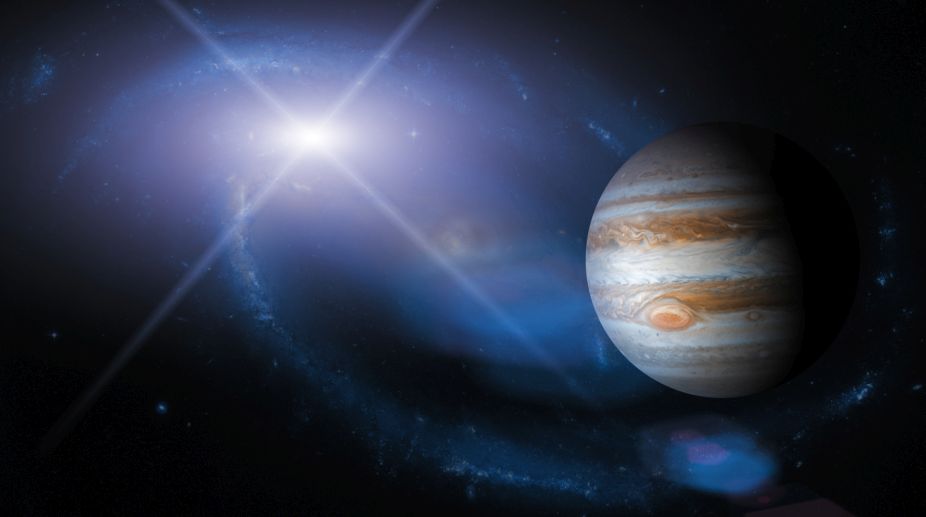NASA’s Juno mission captures lightning on Jupiter
NASA's Juno mission has captured lightning on Jupiter, the agency said.

(PHOTO: Getty Images)
Astronomers have detected two massive lava waves sweeping around the largest lava lake on Jupiter moon Io.
Taking advantage of a rare orbital alignment between two of Jupiter's moons, Io and Europa, the researchers obtained an exceptionally detailed map of the largest lava lake on Io, which is also the volcanically most active body in the solar system.
Advertisement
The most active volcanic site on Io, Loki Patera, is about 200 km across.
Advertisement
The hot region of the patera — a bowl-shaped volcanic crater — has a surface area of 21,500 square km.
"This is the first useful map of the entire patera," said study co-author Ashley Davies of Jet Propulsion Laboratory, California Institute of Technology in Pasadena.
"It shows not one but two resurfacing waves sweeping around the patera. This is much more complex than what was previously thought," Davies said.
On March 8, 2015, Europa passed in front of Io, gradually blocking out light from the volcanic moon.
Because Europa's surface is coated in water ice, it reflects very little sunlight at infrared wavelengths, allowing researchers to accurately isolate the heat emanating from volcanoes on Io's surface.
The infrared data showed that the surface temperature of Io's massive molten lake steadily increased from one end to the other, suggesting that the lava had overturned in two waves that each swept from west to east at about a kilometre per day.
The images were obtained by the twin 8.4-metre mirrors of the Large Binocular Telescope Observatory in the mountains of southeast Arizona and the findings were detailed in the journal Nature.
Overturning lava is a popular explanation for the periodic brightening and dimming of the hot spot, called Loki Patera after the Norse god.
Earthbound astronomers first noticed Io's changing brightness in the 1970s, but only when the Voyager 1 and 2 spacecraft passed by in 1979 did it become clear that this was because of volcanic eruptions on the surface.
Despite highly detailed images from NASA's Galileo mission in the late 1990s and early 2000s, astronomers continue to debate whether the brightenings at Loki Patera — which occur every 400 to 600 days — are due to overturning lava in a massive lave lake, or periodic eruptions that spread lava flows over a large area.
"If Loki Patera is a sea of lava, it encompasses an area more than a million times that of a typical lava lake on Earth," said the study's lead author Katherine de Kleer from University of California, Berkeley.
"Our results indicate that Loki Patera is resurfaced by a multi-phase process in which two waves propagate and converge around the central island," the researchers said.
Advertisement